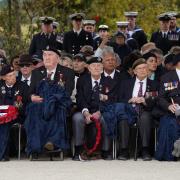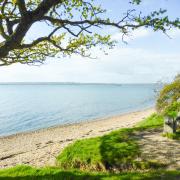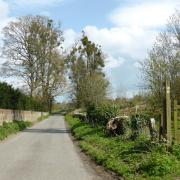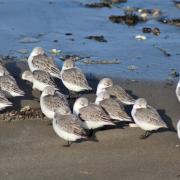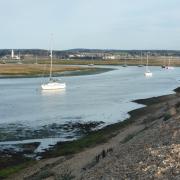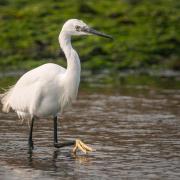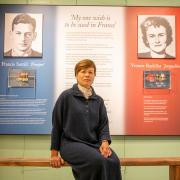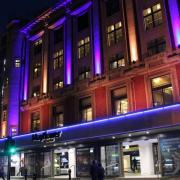An awe inspiring J-class boat will be returning to compete in the Round the Island Race. Claire Pitcher gets an insight into the history and magnificence of the classic Velsheda, with a little help from the J Class Association's David Pitman
A class act
Designed by Charles Nicholson and built by Camper & Nicholson for Mr W.L. Stephenson, Owner of Woolworths, Velsheda was built in 1933 in Gosport. She was Nicholson’s second design for a J Class and Stephenson’s second big yacht. She raced with the greatest names in classic yachting including ‘Britannia’, ‘Endeavour’ and ‘Shamrock’ between 1933 and 1936.In her day – around the late 1930’s, she represented the most advanced technical design for spars, rigging, sails, deck gear and ropes. Her masts were Aluminium, her sails were made from the new Terylene threads and deck gear included winches for easier handling of sheets. The standing rigging was solid rod, even in the 30’s.
Built againThis unique yacht was rescued from a Hamble mud berth in 1984 by Terry Brabant, who economically refitted her for charter work with a new steel mast and limited interior. Still without an engine she sailed regularly along the south coast on charter work and occasionally ventured to the Mediterranean and Caribbean. Occasionally she raced in the annual Round the Island Race and although in poor condition, she was still an impressive sight, completing the 60-mile course in quick time. She was laid up and moored at Gosport in 1995/6.Velsheda was purchased in 1996 as a bare hull lying at mooring in Portsmouth Harbour, and was taken to Southampton Yacht Services, on the River Itchen, where a two-year comprehensive rebuild was completed to bring her back into immaculate racing condition. She was re-launched in November 1997 and her first event was the Antigua Classic Regatta in 1998, which she won.
The Velsheda has a colorful history – who was the person/people responsible for bringing her ‘back to life’ from dereliction in the Hamble ‘mud berth’?This was the foresight of the current owner, Dutch businessman Ronald de Waal, who invested millions into reconditioning this wonderful yacht back to full racing condition. How long did it take to refit the yacht and what was involved?The refit took two years of passion and massive amounts of hard work, it took place at Southampton Yacht Services on the River Itchen.Velsheda’s beauty and history makes her a special yacht. What has been her racing history?Since 1997 when she was relaunched in Southampton she has gone a cross the Atlantic and back every year to compete against other big yachts. She has had many wins around the world including the latest – at Antigua regatta 2010 – four firsts against ‘Ranger’, the other very competitive J Class yacht.
What is Velsheda like to sail? Velsheda has massive amounts of power and is very hard to steer. She is around 200 tons and draws 16 feet so navigation in the Solent is a big problem all the time. Our biggest problem is deciding to defend against approaching yachts. Has she sailed in the Round the Island Race before and where did she come in the placing?During the 90s before her latest re-fit she took part in RTIR a few times, however this year will be her return in full glory. Who are the crew members taking part in this year’s RTIR?Many took part in the last race in Antigua . We have around eight crew from the Solent area and the rest from the permanent crew and overseas race crew. What is going to be the trickiest part of the RTIR course?With there being 1,700 boats taking part, the start is somewhat tricky – we will have to get off the line safely and clear from smaller yachts.
What sort of speeds are you hoping to achieve?If the breeze is there the yacht will exceed 12 knots – not as fast as the planing yachts but still very fast for 200 tons. Who do you think is going to be the one to beat in the race?I think we will really be racing ourselves as there is no one yacht of similar size. However the J Class fleet will be sailing in the Solent in 2012 and this will be great experience for us. Tell us more about that J-class Regatta that’s taking place in the Solent in 2012The J-class boats with be taking part in a number of spectacular regattas in England during 2012, sailing in the Solent during July 2012 which will include a race around the Isle of Wight clockwise (the original 1851 Americas Cup course).
One of a kindNo other class requires a crew of 30 plus experienced sailors to manage more than 1,000 square feet of sail driving a 200 ton hull at 16 knots around the course. To change a Gennaker on a downwind leg takes 10 minutes and commits all the crew to lift and reposition the sails, making every tactical decision critical.
Velsheda at a glanceYear built: 1933 Year restored: 1997 No of crew needed for RTIR: 30 + experienced crew Top speed: 16 knots Length (LOA): 129ft (39.25m) Beam: 6.5 meters Displacement: 200 tonsMast height: 184ft (56m)Overall sail area: 10,000 square ft of sail
The race is on
The excitement of competing against over a thousand boats out on the Solent has been a pull for sailors UK wide every year. Claire Pitcher looks at what we can expect from the Round the Island Race in 2010
The J.P. Morgan Asset Management Round the Island Race is one of the largest participation sporting events in the UK and Ireland and arguably the most famous of its type in the world, regularly attracting over 1,700 boats and 16,000 sailors. Due to the tide, this year’s Race starts at 5am, when up to 1,700 boats will be jostling for their positions off the Royal Yacht Squadron in Cowes on the Isle of Wight. Dame Ellen MacArthur, the world’s most celebrated yachtswoman and veteran of the Round the Island Race, will fire the starting cannon to set the fleet on its way. Ellen follows an illustrious list of previous Race starters including sailing legend Sir Robin Knox-Johnston, double Olympic sailing medallists’ Shirley Robertson OBE and Sarah Webb OBE as well as celebrity gardener Alan Titchmarsh MBE during his tenure as the Isle of Wight’s High Sheriff.
What’s different this year? In an exciting development, the Island Sailing Club has introduced live GPS tracking for all boats taking part in the 2010 race. Competitors with GPS-equipped mobile phones or laptops will be able to have their position broadcast onto a live tracking system that will be broadcast on the race website throughout the day. This means friends, family, sailing fans from all over the world can watch live as the race unfolds. Viewers will be able to pick the boats they want to follow when they open the viewer – live tracking will be available from the early start time – 5am to 10.30pm – 30 minutes after race time limit.The competitors won’t miss out though – they will be able to replay their race and compare their performance with their competitors to see where they got it right – or wrong!Another new initiative for the race is an online photo gallery on the race website where competitors can easily search and find pictures of their crew by selected professional photographers along with details of how to purchase prints.
Watch out forOver the years there have been many famous faces and names racing in this one-day annual yacht racing extravaganza. There is usually a sprinkling of sportsmen, actors and TV personalities, High Court judges, the great and the good from British industry and a politician or two spread throughout the fleet. This year looks no different with Britain’s greatest Olympic Sailor Ben Ainslie, sailing heroine Dame Ellen Macarthur and double Olympic gold medallist Paul Goodison confirmed to enter, while away from sailing there is a favourite from the music world in Richard Stilgoe entered as we go to press.
Record breakersSetting and breaking records has become an important feature of the race with the current multihull record of 3 hours 10 minutes and 11 seconds being held by Francis Joyon since 2001. Property developer and current record holder Mike Slade has broken the monohull record on four occasions, most recently in 2008 on board ICAP Leopard in 3 hours 53 minutes 5 seconds. The majority of the fleet will generally finish the race within eight to 10 hours, but it does totally depend on the weather and the class of boat being raced. In 2008, the breeze was up and the first boat home blasted round the course in a staggering 3 hours 23 minutes and 50 seconds, which meant the crew was back for breakfast.However for others at the back of the fleet it can be a long haul, taking up to 12 hours or even more to complete. There are two key accolades to this race, to take line honours (i.e. fastest boat round) and the overall winners, who are rated on a handicap system. However, there are some 60 trophies to be won and every single finisher receives a special tankard to mark the occasion. May the best boat win.





